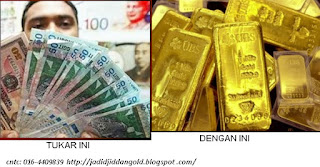Decisions made at the Dec. 12 FOMC meeting could add as much as $2.2 trillion to the Fed’s balance sheet over the next two years, which will turbocharge gold prices,silver prices and oil prices.
The FOMC is the select group within the Fed that sets monetary policy, such as interest rates and the bond-buying programs known as quantitative easing, or QE.
That the Fed will dramatically increase QE3, which launched in September with the monthly purchase of $40 billion in mortgage-backed securities (MBS), at the Dec. 12 FOMC meeting is almost a given; it practically has no choice.
But the real issue at the Dec. 12 FOMC meeting will be what to do about the Dec. 31 expiration of the
Operation Twist program. In Operation Twist, the Fed sells about $45 billion of short-term Treasuries each month and uses the proceeds to buy long-term Treasuries.
The Fed probably would opt to extend Operation Twist – which has not added to the Fed’s balance sheet as QE1, QE2 and QE3 have – except that it is starting to run low on short-term securities to sell.
Yet the Fed committed in October to extending its easing policies as long as necessary to bring down unemployment and aid the US economy. Its only option is to convert Operation Twist to a conventional bond-buying program – effectively doubling its QE3 money-printing.
“Our baseline expectation is a continuation of the current pace of asset purchases of $85 billion per month on an open-ended basis, which would imply that the current $45 billion per month in [Operation] Twist-financed Treasury purchases is replaced by $45 billion per month in QE-financed Treasury purchases,” Jan Hatzius of Goldman Sachs (NYSE:
GS) said of the likely actions at the Dec. 12 FOMC meeting.
The Stimulus for Silver Prices & Gold Prices
What matters to gold and silver prices, though, is not just the increased rate of QE3 but the likely duration.
The research team at Goldman Sachs estimated that the slow US recovery will keep the Fed on this $85 billion-a-month money-printing binge for at least two years.
At that point, the tab for QE3 would be $2 trillion, approximately equal to QE1 and QE2 combined.
A team at Bank of America (NYSE:
BAC) came to a similar conclusion, although the team put the ultimate total for QE3 slightly higher, at $2.2 trillion. Add that to the existing $2.8 trillion of debt on the Fed’s balance sheet, and you get a grand total of $5 trillion.
While such runaway monetization could have dire consequences for the US dollar, it will be jet fuel for both
silver prices and
gold prices. Gold has recently hovered around $1,700 an ounce, while silver is in the $35 neighborhood.
The Fed’s QE programs, which started in January 2009, have helped push gold up 97% in less than four years.
It’s no surprise, then, that major banks see gold prices taking off next year after the Fed accelerates QE3.
Deutsche Bank (NYSE:
DB) set a target of $2,000 for the first half of 2013, while Bank of America has projected gold prices at $2,400 by the end of 2014.
The Website ZeroHedge foresees an even greater impact from the QE3 that the FOMC meeting will unleash: gold at $3,350 by early 2015 and oil at $190 a barrel.
NOTE: WHY YOU SHOULD BUY GOLD BULLION FROM PUBLIC GOLD.
1. BUY BACK SPREAD 4.5% - 10%. ANY TIME TO BUY BACK YOUR GOLD
2. HE HAS SAFEBOX UP TO 5000 BOXES MULTIPLES SIZE.
3. STOCK ALWAYS READY.
CHECK OUT AND REGISTER HERE TO START HEDGE YOUR MONEY
http://www.publicgold.com.my/referral/PG002162/84841
016-4409839

